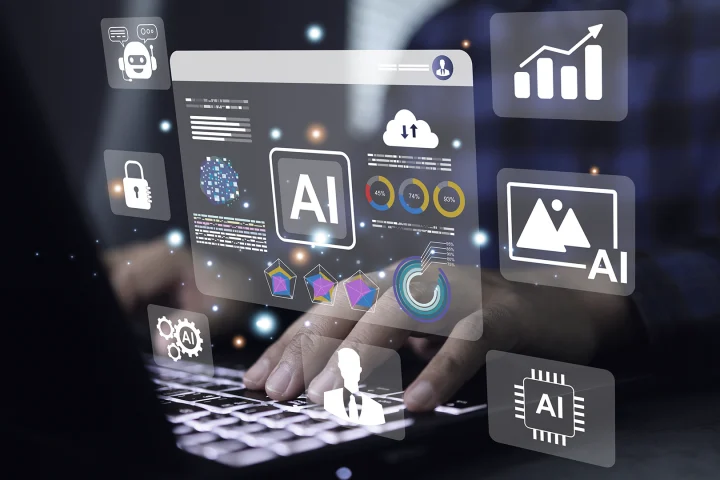
As we move further into the 21st century, the devices and interfaces we use to access data continue to change and evolve. Smartphones are ubiquitous, and we can now access data on a wrist watch. Unfortunately, when it comes to IBM i applications, many are still accessed via a green screen and valuable DB2 data is still bottled up where modern devices can’t access it.
Introducing a browser-based development and modernization strategy can breathe new life into your IBM i applications and help you build a cost-effective strategy to stay with the times and give your company a competitive advantage!
Leverage and extend your existing ERP
Your ERP system, running on IBM i, is the backbone of your key business applications, managing your day-to-day business operations in the areas of finance, order management, inventory, manufacturing, etc. In most cases, the ERP has been customized to the unique operations of your business. It might be a customized version of third-party software or a home-grown ERP designed specifically for your operations.
In many cases, back-office business applications are running fine and meet most of your business demands. The problem is the front-end, which in many organizations continues to be delivered via the green screen or older screen scraper technology. The perception of the green-screen is, quite understandably, one of a dated system, old architecture, something that needs to be replaced. It’s a shame that this interface is the first impression for most users. You know what they say about first impressions… Consider the new CIO, unfamiliar with IBM i, getting credentials and being shown how to sign into the green screen. Their first thought is: how fast can we get rid of this system?
But we know that replacing a system and investing in a new ERP (that may include new software and hardware) can be very expensive and a risky proposition for many businesses. The alternative is to leverage the investment in your existing system and extend the life of your current ERP, and in doing so more fully utilize your IBM i, which is a world class server platform. Building a development strategy that involves a mobile-friendly, browser-based delivery can take you in this direction. The solution you deliver will be driven by your company’s current pain points that you likely know all too well. The deliverable can take different forms such as web portal access for customer/partners, ecommerce, dashboards, touch screen applications for warehouse users, and mobile first applications for remote service technicians, to name a few.
Where do you start?

There are many drivers for new development and modernization; for example, customers, dealers/partners, sales reps, shop floor operations and executive information needs. I have worked with many companies who’ve had their eyes opened to the potential of what can be done on IBM i. The beauty of starting this process with your existing ERP in place is that you can start slowly and choose high-value, visible projects that have immediate benefit to your organization. Obviously, applications that will grow revenues and help serve your customers are top of the list.
I’ll provide a few examples below based on our team’s experience with projects we’ve been involved in that are hosted directly on the IBM i using Apache Server:
- Ecommerce – While this may seem like a very common application, it remains a key direction for many businesses. The absence of an ecommerce presence may drive your customers to your competitor’s site (or to Amazon). Many projects we’ve been involved with are Business to Business ecommerce. B2B applications usually target a dealer or distributor market that is already using your products. Many new business owners expect to be able to source and order products on-line. This helps solidify existing business and attract new on-line business opportunities. The solution is hosted on IBM i and integrated with your back-end, allowing customers to place orders directly via a mobile-friendly browser application. Orders drop directly into an existing order fulfillment process with minimal or no change to existing applications.
- Sales team applications – Again, applications that drive new business and make it easier to write new business are salient, and we have seen consistent demand to make life easier for sales representatives. These apps remove obstacles and increase your competitive advantage: they provide mobile-friendly access to customer account data, order history, pricing, and order entry.
- Dashboards – Dashboards give decision makers what they need in a consolidated graphical view that they can access anywhere. Talk about high visibility. If you can win over executives, then it helps smooth the path forward for other modernization initiatives. A browser-based application with graphs and charts can be relatively easy to develop and implement. It’s not burdened by a lot of input validation and business logic. Generally, it’s a collection of queries that pull together real-time data in a meaningful way.
- Third party integrations – your IBM i is an open platform, and modern languages such as PHP open many possibilities for integration with disparate systems via APIs and web services.
- Case in point, shopping cart punch out. This is driven by third-party procurement software like Ariba, Coupa or Oracle eProcurement that your customers may be using. It allows buyers to “punch-out” to your website, search and add items to a cart that are then automatically returned to the requisition they are building in the procurement software package. After approval, it then electronically sends the order to your system.
- Bridging internal systems – web services can bridge disparate systems in your own organization. You may have a WMS system that is hosted on a different system than your ERP, yet you want to build a browser-based application for your warehouse personnel that pulls real-time data from both systems. You may also need to get inventory levels from other locations. All of this can be facilitated via web service APIs.


